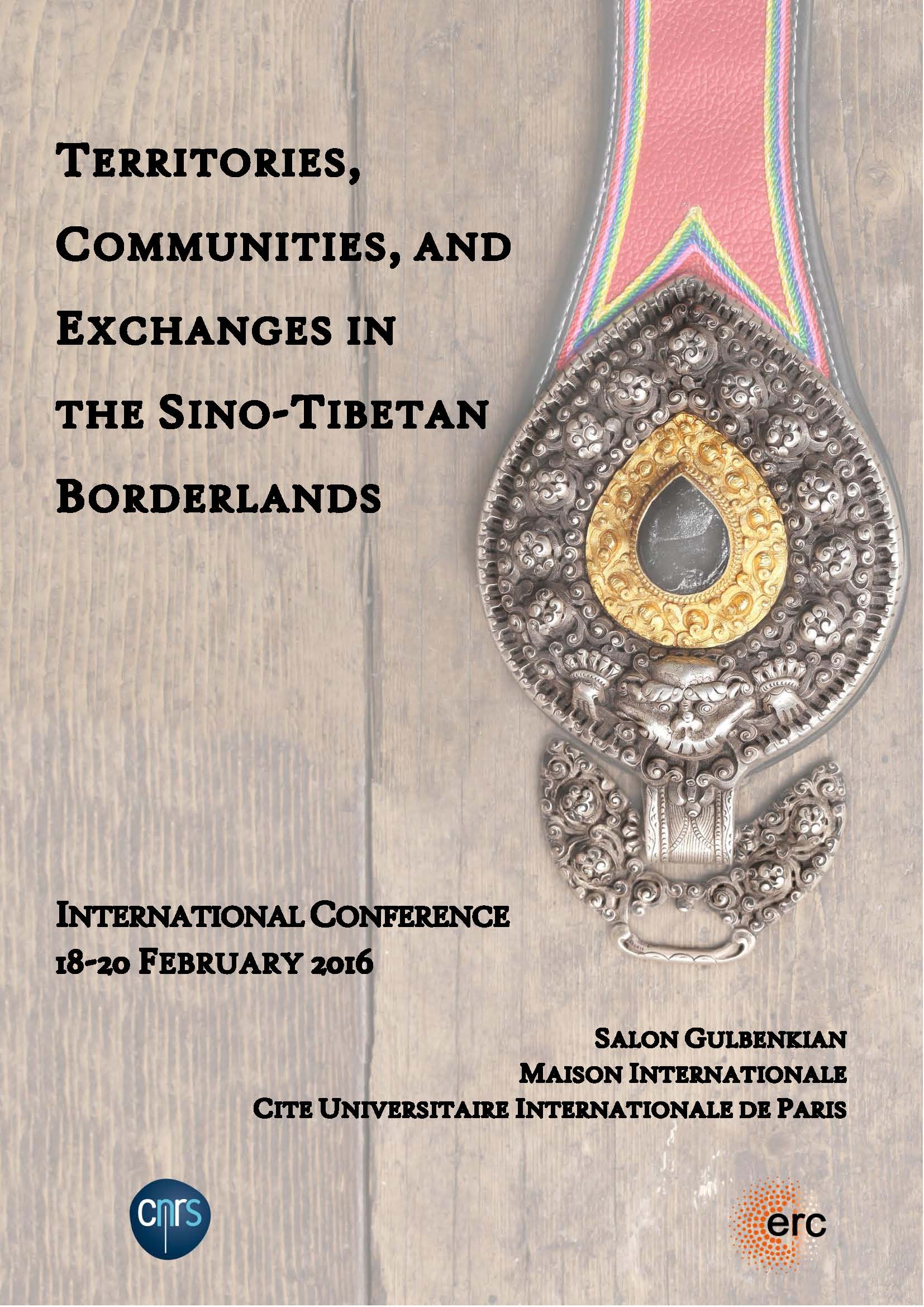Notice
Chen Bo (Sichuan University), “House Society” Revisited "
- document 1 document 2 document 3
- niveau 1 niveau 2 niveau 3
Descriptif
In this paper, I will begin by considering the concept of “house society” and its applicability to Southwest China. I ask the question of why no scholar, Levi-Strauss included since he originally framed this concept, has successfully used this concept to go beyond the traditional framework of descent and alliance. After making a thorough survey of the history of European views on Tibetan kinship, I argue that the dominance of Ladakh metonymy was responsible for the failure to reconsider both this area and the concept. Based on this dual consideration, I further scrutinize Levi-Strauss’s concept of “house society” in light of the case of Dra-pa Tibetans, who are regarded as the link between two large areas: societies on the Tibetan plateau characterized and demarcated by two kinship-marriage models, and the Ye (house) societies that include ethnic groups such as the Yi, Dra-pa, Na and Naxi. For several reasons, I argue that the house society model was not a social institution that emerged later but that it was one of the earliest. Though the earliest records we obtained were about one thousand and five hundred years ago, it might possibly date back to earlier time. While the mode of sexual relations among Dra-pa is being transformed towards marriage, the matrilineal/local-based visit by males still dominates. I further argue that associating women with the house plays a crucial role in the emergence of this institution. This binding relationship between women (men included) and the house is a form of house fetishism and has contributed to social phenomena we are witnessing today in Dra-pa, as well as other areas westward, such as local competition over building the best house.
International conference “Territories, Communities, and Exchanges in the Sino-Tibetan Kham Borderlands,” Februray 18-20, 2016. This conference is an outcome of a collaborative ERC-funded research project (Starting grant no. 283870).
For more information, please visit the project's Website: http://kham.cnrs.fr
Dans la même collection
-
C. Pat Giersch (Wellesley College), "Patterns of Inclusion and Exclusion Along Twentieth-Century Ch…
In recent years, increasingly sophisticated work has traced the remarkable changes in early twentieth-century state-building along China's southwestern and Tibetan borderlands. During this same period
-
Lucia Galli (University of Oxford), "The Price of Enlightenment: The Travel Account of Kha stag ʼDz…
Frontier territories characterised by intense socio-economic, political, and cultural inter-actions, in the mid-nineteenth century the easternmost fringes of the Tibetan plateau saw the rise of the
-
John Bray, "French Catholic Missions and Sino-Tibetan Trade: Local Networks and International Enter…
The Missions Étrangères de Paris (MEP) sent their first missionary on an exploratory mission to the Sino-Tibetan borderlands in 1847, and they retained a presence in the region until 1952. Together
-
Tenzin Jinba (National University of Singapore), " Two Gyalrong Weddings Under Fire: Rethinking of …
Two weddings in 2009 and 2015 respectively have received wide publicity among Tibetans and others within and out of China. The first was that of Lobsang Dundrup, a renowned singer from Gyalrong, and
-
Eric Mortensen (Guilford College)," Boundaries of the Borderlands : Mapping Gyalthang"
This project seeks to discern the physical and conceptual boundaries of the Tibetan region of Gyalthang, in southern Kham. At issue are questions about the relationships between older
-
Fabienne Jagou, " Manchu Officials’ Khams Travel Accounts: Mapping a Course Through a Qing Territor…
Throughout the Qing dynasty (1644-1911), more and more travelers –officials, military and merchants- went to the Southwest border of China and dedicated some of their time to writing travel accounts,
-
Isabelle Henrion Dourcy (University of Laval), "Making Movies in the Gesar Heartland: The Burgeonin…
This conference is an outcome of the collaborative ERC-funded research project “Territories, Communities, and Exchanges in the Sino-Tibetan Kham Borderlands” This research project focuses on the
-
Elizabeth Reynolds (Columbia University), " Monasteries, Merchants, and Long Distance Trade: The Ec…
Pre-1959 Tibet was not a “closed off land” as is often assumed, but a place of dynamic economic structures and a diverse body of economic actors. The Trehor region, an area located in modern day
-
Yudru Tsomu (Sichuan University), " Rise of a Political Strongman in Dergé in the Early Twentieth C…
This paper discuses rivalry for the throne of Dergé between 1890 and 1940. In the late nineteenth and early twentieth centuries, internecine feuds created a power vacuum serious enough to invite
-
Katia Buffetrille (Ecole Pratique des Hautes Etudes), " The Increasing Visibility of the Borderland…
For centuries, Central Tibet and its capital Lhasa were regarded as the center—as is obviously expressed in the very name of the region in Tibetan, dBus, “Center”—of political and religious life in
-
Scott Relyea (Hamline University), " Settling Authority: Sichuanese Farmers in Early Twentieth Cent…
From 1907 to 1911, some 4,000 commoners from the Sichuan Basin ventured west. Enticed by promises of large tracts of uncultivated land and three years of free rent, seeds, animals, and farm implements
-
Dawa Drolma (Bay Path University), " The Renaissance of Traditional Dzongsar Craft-making in the Me…
As a member of a deeply-rooted traditional craft-making family in the Meshö (Sman Shod) Valley of Kham region, I will present the results of my ongoing fieldwork and academic study on the renaissance













